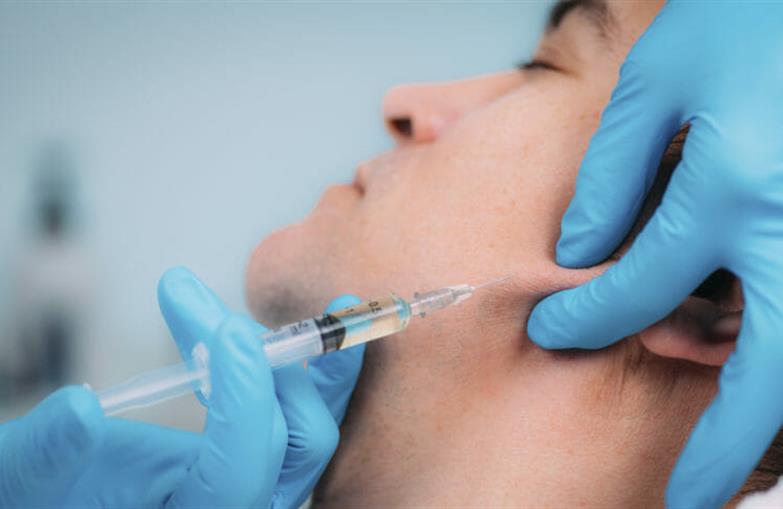The nonblinded, prospective, single-center study evaluated the aesthetic outcome, patient satisfaction, adverse events, and volume changes after jawline contouring with use of objectifiable 3-dimensional (3D) surface analysis and standardized reporting scales. All participants received jawline contouring using the same hyaluronic acid–based soft tissue filler.
Results were assessed with the Global Aesthetic Improvement Scale (GAIS) by the investigator and patient at each visit. A standardized patient satisfaction survey was used to assess overall patient satisfaction after each visit. Clinical follow-ups occurred 14 days and 3, 6, 9, and 12 months after the procedure.
The study included 30 patients (mean age, 56.83 ± 8.3 years [range, 43-71]; 29 women). They received an average of 7.23 ± 1.5 cc of hyaluronic acid–based soft tissue filler at the first visit. A total of 25 patients had an optional touch-up at the second visit, and 2 patients were lost in the follow-up.
A volume increase of 9.90 ± 2.4 cc after 14 days and 5.67 ± 1.6 cc at 12 months was shown by 3D analysis. Multivariate analysis demonstrated a significant difference between the measured volume and the different time points (P < .001). Time of measurement was significantly correlated with measured volume (rp = −0.629; P <.001).
The surface-volume coefficient (SVC) had an average of 1.10 ± 0.2 cc after 14 days, 0.95 ± 0.1 cc after 3 months, 0.83 ± 0.1 cc after 6 months, 0.74 ± 0.1 cc after 9 months, and 0.63 ± 0.1 cc after 12 months. Time of measurement was significantly correlated with measured SVC (rp = −0.761, P < .001). Multivariate analysis showed a significant difference between measured SVC and the measurement time points (P < .001).
The mean GAIS score was 4.47 ± 0.7 when assessed by the investigator and 4.70 ± 0.5 when assessed by the patient after 3 months. After 12 months, the mean GAIS score was 3.96 ± 0.7 when assessed by the investigator and 4.25 ± 0.8 when assessed by the patient. GAIS assessed by the investigator was not statistically significantly different throughout the study (P = .058). However, GAIS assessed by the patient was statistically significantly different among the visits (P = .027).
A total of 55 adverse events in 23 patients occurred, including 16 instances of bruising, 11 cases of mastication disorder, and 10 cases of facial swelling.
Study limitations include the nonblinded design, the inclusion of only 1 male participant, and multiple blinded investigators were not used. Also, the analysis lacked information regarding patients’ baseline status for volume deficiency, irregularity, and jowling of the jawline before the filler injection.
“Patients who suffer from a volume-deficient jawline and present with age or BMI-dependent jowl formation can be treated in a satisfactory way by injection of soft tissue fillers,” the study authors commented.






